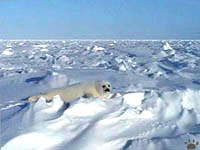
Baby harp seal, Gulf of St. Lawrence.
Part 5: Canada (continued)
Isles de la Madeleine are a group of small islands connected
by sand bars, located in Gulf of St. Lawrence between Newfoundland and Prince
Edward Island.
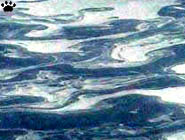 | 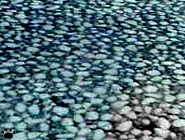
Patterns of freezing sea, Gulf of St. Lawrence. | 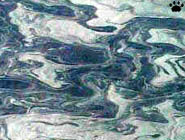 |
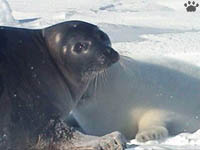 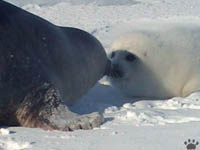
Harp seal females and pups, Gulf of St. Lawrence. |
Every year in late February or
early March, hundreds of thousands of harp seals (Phoca groenlandica) haul
out on ice floes south from the islands to give birth and mate. Of the three major
breeding areas, this is the largest and the most accessible one. (The other two
are the White Sea, Russia, and Jan Mayen Island area). Getting to see them isn't
cheap, but it's one of the best things to do on this planet. | 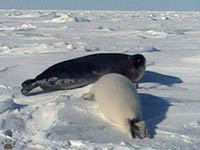 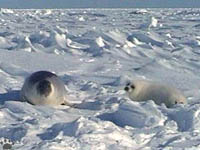
Harp seal females and pups, Gulf of St. Lawrence. |
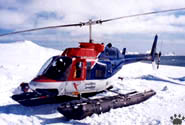 |
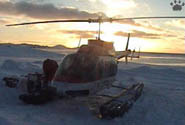 |
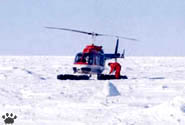 |
| Flying in a small helicopter over the frozen sea is part of the fun. |
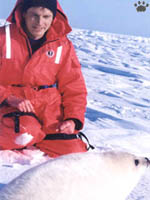
Author with a baby seal, south from
Iles de la Madeleine. |
Helicopters can be hired at Iles de
la Madeleine, Newfoundland, or Prince Edward I. Distances and prices vary depending
on the location of ice floes with seal herds, but usually it's easier to find
a chopper at Iles de la Madeleine.

Harp seal family, aerial view. |
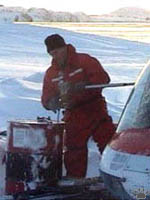
Refueling a helicopter,
Isles de la Madeleine. |
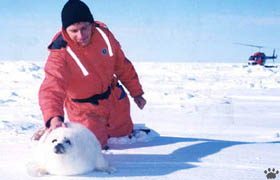 |
 |
| Some baby seals don't like being
handled, but others obviously enjoy it. |

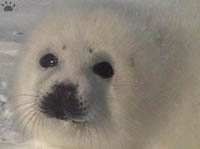 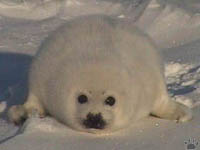 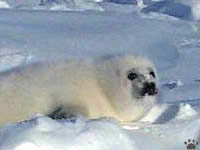 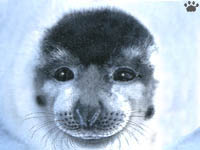
Harp seal pups of various age. |

During two weeks of nursing, the
baby seal grows to 100 lb/45 kg.
Harp seals are fast swimmers, and migrate for up to 6,000 miles/9,600 km to get
to their breeding areas. After being nursed for about two weeks, the newborn baby
is abandoned, and spends up to 20 days alone on the ice, waiting until it sheds
its white coat, and becomes silvery-gray with dark spots. The coloration keeps
changing with each moult (adult seals moult in April), until the spots disappear
and harp-like stripes form. This black-and-white pattern is especially bright
and beautiful in adult males. Seals mostly feed on small Arctic fish such as capulin.
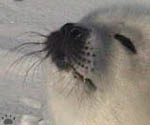
Even as small babies, harp seals
have gorgeous whiskers. |
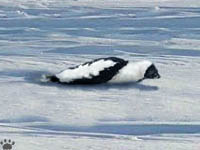 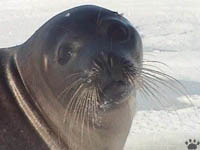  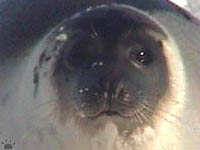 
Harp seal male (top), and females of various age. |
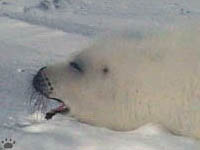
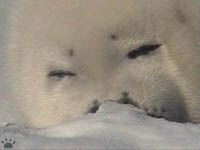
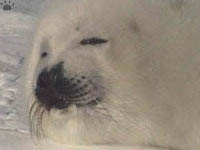 Sleeping baby seals.
Sleeping baby seals. |
Although many pups perish during the
first days of life, their brief icy childhood is still supposed to be a happy
break before years of dangerous life in the frozen sea. But hundreds of thousands
are killed every year in Russia (where it's strictly for profit) and in Canada
(where it's just a manifestation of local chauvinism and ignorance). It's the
largest slaughter of wild animals in the world. Proponents of seal hunt blame
the seals for slow recovery of cod stocks, which have crashed due to overfishing
decades ago. As usual, fishermen never accept the blame for depleting fish stocks,
and look for scapegoats. |
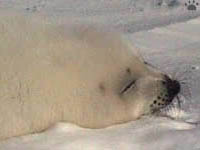 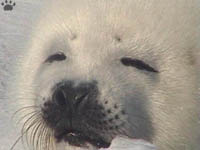
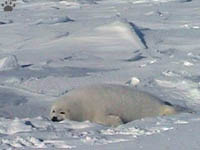 Sleeping baby seals.
Sleeping baby seals. |
 |

|
 |
| Curious females sometimes come to
investigate you when you play with babies, but won't bite you as long as you don't
look threatening. |
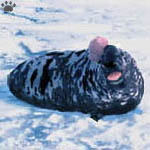
Male hooded seals have a strange
organ called baloon, an inflatable
nose resonator. Gulf of St. Lawrence. |
Another species, hooded seal (Cystophoca
cristata), is much more difficult to see in the Gulf, which is the southern
limit of its Arctic range.

Hooded seal pups are weaned after only four days of nursing -
the shortest time of all mammals, but they gain 15 lb/7 kg per day during that
period. Gulf of St. Lawrence. |
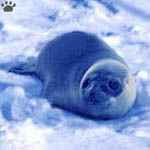
Baby hooded seals shed their white
coats before birth, and are born with
blue fir. Gulf of St. Lawrence |
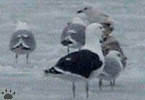 |
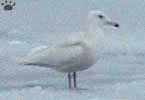 |
 |
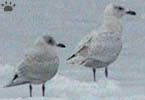 |
| Numerous gulls (Larus marinus,
L. hyperboreus, L. islandicus, L. smithsonianus) feed at
seal haulouts on the ice. |

Baby harp seal, Gulf of St. Lawrence.
Part 6: South America
Back to Part 4
Home |